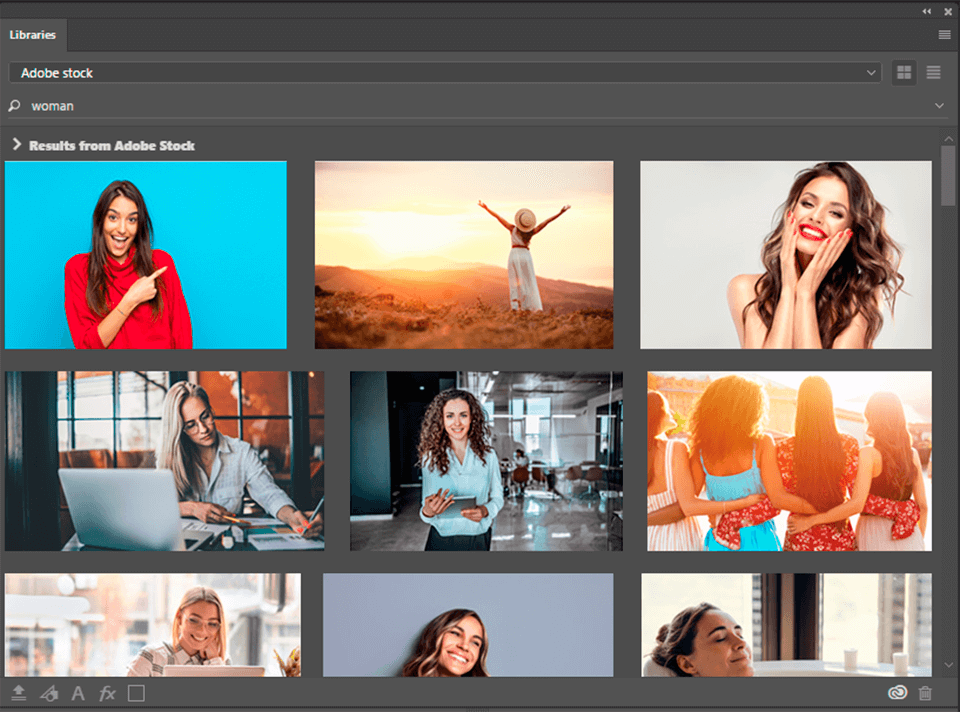I. Introduction:
In the ever-evolving world of digital content creation, understanding the dynamics of popular and profitable imagery is paramount for photographers and creators alike. As one of the leading stock photography platforms, Adobe Stock provides a treasure trove of insights into the most sought-after images.This blog post delves into the secrets behind Adobe Stock's best selling images, unraveling the factors that contribute to their success. From analyzing prevailing themes to exploring composition and aesthetics, we aim to inspire and inform fellow artists, offering valuable tips to create captivating and commercially viable content. Join us as we unlock the keys to thriving in the competitive landscape of visual storytelling.Also Read This: How Do You Know If Images Are Copyrighted and How to Use Them Legally
II. Understanding Adobe Stock's Best Selling Images

A. Overview of Adobe Stock's Ranking System:
Adobe Stock, as one of the leading stock photography platforms, employs a sophisticated ranking system to identify and categorize "best selling" images. This system takes into account various metrics, such as the number of downloads, views, and user interactions with each image. The algorithm also considers the image's overall performance over time, ensuring that the ranking reflects sustained popularity rather than just short-term spikes.B. Factors Contributing to Popularity and Profitability:
1. Relevance to Current Trends and Topics: Images that align with current trends, events, and social themes tend to gain more traction on Adobe Stock. Content creators must keep their finger on the pulse of contemporary issues and cultural movements to produce images that resonate with a wide audience.2. Visual Appeal and Technical Quality: High-quality images with excellent composition, sharpness, and attention to detail attract more buyers. Clear and well-executed visuals have a higher chance of being selected for various projects, from marketing campaigns to editorial features.3. Effective Use of Keywords and Metadata: Accurate and relevant metadata, including descriptive keywords and appropriate categorization, plays a crucial role in discoverability. Images with well-optimized metadata are more likely to show up in relevant search results, leading to increased visibility and potential sales.4. Versatility for Various Applications: Images that can be used in diverse contexts tend to perform well on stock platforms. Versatile content gives buyers the flexibility to apply the image to multiple projects, making it a cost-effective choice for their needs.5. Cultural and Regional Preferences: Understanding the preferences and tastes of diverse global audiences is essential. Images that appeal to specific cultural nuances and regional aesthetics have a higher chance of becoming best sellers in those respective markets.By comprehending these factors, photographers and content creators can strategically tailor their work to cater to the demands of Adobe Stock's vast and discerning customer base, increasing their chances of creating images that flourish on the platform.Also Read This: How to Create 1×1 Images
III. Top Themes and Subjects in Best Selling Images
A. Nature and Landscapes: Nature and landscape images consistently rank among the best sellers on Adobe Stock. Captivating shots of scenic vistas, majestic mountains, serene beaches, and lush forests have a universal appeal. These images evoke a sense of wonder and connection with the natural world, making them popular choices for a wide range of projects, from travel brochures to environmental campaigns.B. Technology and Innovation: In today's digitally driven world, images depicting technology and innovation are in high demand. Pictures of futuristic gadgets, artificial intelligence, virtual reality, and smart devices captivate audiences seeking to stay updated on the latest technological advancements. These images are commonly used in tech-related blogs, marketing materials, and scientific publications.C. Business and Finance: The corporate world heavily relies on images that convey professionalism, success, and financial prosperity. Business-related images featuring confident professionals, modern office spaces, teamwork, and financial charts are sought after for use in presentations, reports, and marketing materials.D. Lifestyle and Travel: Images that showcase diverse lifestyles and travel experiences are perennial favorites. Pictures of people engaging in leisure activities, cultural events, and exploring exotic destinations inspire wanderlust and appeal to travel and lifestyle-focused publications and campaigns.E. Health and Wellness: As wellness and self-care gain prominence, images representing a healthy lifestyle and well-being are in high demand. Photos of fitness, healthy eating, mindfulness, and relaxation resonate with audiences seeking to improve their physical and mental health.F. Diversity and Inclusion: Inclusion and diversity have become essential themes in contemporary visual storytelling. Images celebrating people of different ethnicities, cultures, genders, and abilities are widely used in advertising, social campaigns, and editorial content to reflect a more inclusive world.By understanding these popular themes and subjects, photographers and content creators can tailor their work to align with market demands, increasing the likelihood of creating images that attract buyers on Adobe Stock and other stock photography platforms.The following video is about Adobe Stock:Also Read This: Why 123RF’s Collections Appeal to a Global Audience
IV. Analyzing Composition and Aesthetics
A. Use of Vibrant Colors and Contrast: Best selling images on Adobe Stock often feature vibrant and eye-catching colors. Bold hues and high contrast help images stand out and create visual impact. Photographers and creators should pay attention to color theory and ensure that colors complement each other harmoniously, enhancing the overall appeal of their work.B. Symmetry and Leading Lines: Symmetry and leading lines are powerful compositional techniques that draw the viewer's attention and create a sense of balance and order in the image. Symmetrical subjects or scenes, such as architectural marvels or reflections on water, can evoke a feeling of tranquility. Leading lines, such as roads, pathways, or architectural lines, guide the viewer's gaze through the image, making it more engaging and dynamic.C. Emotional Storytelling and Human Connection: Images that evoke emotions and depict genuine human connections tend to perform exceptionally well. Capturing authentic moments of joy, love, or contemplation resonates with viewers, allowing them to connect on a deeper level with the image. Emotionally compelling visuals have a higher chance of being chosen for marketing campaigns and editorial features.D. Minimalism and Negative Space: Simple and uncluttered compositions with ample negative space allow the main subject to breathe and stand out. Minimalist images are popular due to their versatility and ability to convey a clear message with elegance and simplicity. Such images are widely used in advertising, branding, and editorial design.E. Rule of Thirds and Golden Ratio: The rule of thirds and the golden ratio are classic compositional guidelines that add visual interest and balance to an image. Placing the main subjects or points of interest along these gridlines or intersections helps create a more visually appealing and harmonious composition.F. High-Quality and Sharp Imagery: Technical quality is crucial for best selling images. Images should be sharp, well-exposed, and free from artifacts or distortions. Customers expect top-notch quality, especially for commercial purposes, and are more likely to choose images that demonstrate technical excellence.By carefully considering these composition and aesthetic elements, photographers and content creators can craft visually captivating images that have a higher chance of becoming best sellers on Adobe Stock. Understanding how these techniques contribute to the overall appeal of an image empowers artists to refine their skills and create content that resonates with a broad audience.Credit: Annelisa Leinbach / Big Think; Adobe Stock pic.twitter.com/ze1OvP6ijs
— 🦋Blue Angel🦋 (@Courtne08241586) July 19, 2023
Also Read This: how do you download an image on a chromebook
V. Navigating Copyright and Intellectual Property
A. Understanding Copyright and Licensing: Before using or selling any content on Adobe Stock or any stock photography platform, it is essential to understand copyright and licensing. Copyright grants exclusive rights to the creator of an original work, such as photographs, to control its use and distribution. When photographers upload their images to stock platforms, they retain the copyright while granting certain usage rights to buyers through licenses.B. Licensing Options on Adobe Stock: Adobe Stock offers different licensing options to buyers, such as standard and extended licenses. The standard license typically allows the image to be used for commercial and non-commercial purposes, such as websites, blogs, social media, and print materials. Extended licenses, on the other hand, provide additional usage rights, like for merchandise or large print runs.C. Avoiding Copyright Infringement: To prevent copyright infringement, content creators must only upload images to stock platforms for which they hold the full rights or have obtained necessary permissions. Using someone else's work without permission, even with slight modifications, can lead to legal consequences and damage to one's reputation as a professional.D. Respect for Intellectual Property Rights: When using stock images from Adobe Stock or any other source, it is crucial to respect the intellectual property rights of the original creators. Adhere to the terms and conditions of the licensing agreement, and don't use the images beyond the permitted usage scope.E. Giving Credit to the Original Creator: While it might not always be a legal requirement, giving credit to the original creator of the image is a sign of respect for their work. Properly crediting the photographer in the caption or credits section helps acknowledge their contribution and may be a condition of the licensing agreement.F. Model and Property Releases: For images featuring recognizable people or private property, it is essential to have signed model and property releases. These releases grant permission from the individuals or property owners to use their likeness or property commercially. Without valid releases, the image may have limited usability and could lead to legal issues.By understanding and respecting copyright and intellectual property rights, content creators can confidently navigate the world of stock photography and avoid potential legal complications. Complying with licensing terms, obtaining necessary releases, and giving credit where due demonstrate professionalism and ethical conduct in the creative industry.Also Read This: How Does 123RF Pricing Work
VI. Tips for Creating Your Own Best Selling Images
 A. Embrace Creativity while Staying Relevant:
Striking a balance between creativity and relevance is key to producing best selling images. While originality is essential, ensure that your content aligns with current trends, themes, and market demands. Stay informed about the latest industry developments and adapt your photography style accordingly.B. Invest in High-Quality Equipment and Post-Processing:
Invest in a high-quality camera, lenses, and lighting equipment to capture images with exceptional clarity and detail. Additionally, post-processing skills are crucial for enhancing your images further. Learn to use photo editing software effectively to fine-tune colors, contrast, and sharpness, while maintaining a natural and professional look.C. Focus on Strong Composition:
Pay close attention to composition when framing your shots. Use techniques like the rule of thirds, leading lines, and symmetry to create visually appealing and balanced images. A well-composed photograph grabs the viewer's attention and makes a lasting impression.D. Understand Your Audience and Market Niche:
Identify your target audience and the specific market niche you want to cater to. Understanding their preferences and needs will guide you in creating images that resonate with potential buyers. Tailoring your work to a specific niche can also help you stand out in a crowded marketplace.E. Tell Compelling Stories:
Incorporate storytelling elements into your images to evoke emotions and connect with viewers. Capturing authentic moments and genuine human interactions adds depth and relatability to your photographs. Strong storytelling can make your images more memorable and valuable to potential buyers.F. Continuously Improve and Learn:
Photography is an evolving art form, and continuous learning is essential for growth. Take the time to study the work of other successful photographers, attend workshops, and seek feedback from peers and mentors. Learn from your own experiences, successes, and failures, and use them to refine your skills and style.G. Keyword and Metadata Optimization:
Ensure that your images are discoverable by using relevant and descriptive keywords and metadata. Accurate labeling increases the chances of your images appearing in relevant search results and being noticed by potential buyers.H. Promote Your Work:
Maximize the exposure of your images by promoting your portfolio through social media, personal website, or photography communities. Engage with your audience, participate in discussions, and showcase your best work regularly to attract potential buyers and clients.By applying these tips, aspiring photographers and content creators can elevate their work and increase their chances of creating best selling images on Adobe Stock and other stock photography platforms. Remember that success often comes with persistence, dedication, and a genuine passion for the craft.
A. Embrace Creativity while Staying Relevant:
Striking a balance between creativity and relevance is key to producing best selling images. While originality is essential, ensure that your content aligns with current trends, themes, and market demands. Stay informed about the latest industry developments and adapt your photography style accordingly.B. Invest in High-Quality Equipment and Post-Processing:
Invest in a high-quality camera, lenses, and lighting equipment to capture images with exceptional clarity and detail. Additionally, post-processing skills are crucial for enhancing your images further. Learn to use photo editing software effectively to fine-tune colors, contrast, and sharpness, while maintaining a natural and professional look.C. Focus on Strong Composition:
Pay close attention to composition when framing your shots. Use techniques like the rule of thirds, leading lines, and symmetry to create visually appealing and balanced images. A well-composed photograph grabs the viewer's attention and makes a lasting impression.D. Understand Your Audience and Market Niche:
Identify your target audience and the specific market niche you want to cater to. Understanding their preferences and needs will guide you in creating images that resonate with potential buyers. Tailoring your work to a specific niche can also help you stand out in a crowded marketplace.E. Tell Compelling Stories:
Incorporate storytelling elements into your images to evoke emotions and connect with viewers. Capturing authentic moments and genuine human interactions adds depth and relatability to your photographs. Strong storytelling can make your images more memorable and valuable to potential buyers.F. Continuously Improve and Learn:
Photography is an evolving art form, and continuous learning is essential for growth. Take the time to study the work of other successful photographers, attend workshops, and seek feedback from peers and mentors. Learn from your own experiences, successes, and failures, and use them to refine your skills and style.G. Keyword and Metadata Optimization:
Ensure that your images are discoverable by using relevant and descriptive keywords and metadata. Accurate labeling increases the chances of your images appearing in relevant search results and being noticed by potential buyers.H. Promote Your Work:
Maximize the exposure of your images by promoting your portfolio through social media, personal website, or photography communities. Engage with your audience, participate in discussions, and showcase your best work regularly to attract potential buyers and clients.By applying these tips, aspiring photographers and content creators can elevate their work and increase their chances of creating best selling images on Adobe Stock and other stock photography platforms. Remember that success often comes with persistence, dedication, and a genuine passion for the craft.Also Read This: How to Remove Backgrounds from Images in Paint for Clean Edits
FAQs about Insights into Popular and Profitable Content: Adobe Stock's Best Selling Images:
- What are the most popular categories of images on Adobe Stock?
- Nature: Images of natural landscapes, animals, and plants are always popular.
- People: Images of people of all ages, races, and ethnicities are also in high demand.
- Business: Images of office spaces, products, and services are essential for businesses of all sizes.
- Travel: Images of tourist destinations, landmarks, and activities are popular with travelers and vacationers.
- Food: Images of delicious food and drinks are sure to catch the eye of potential customers.
- What are the most profitable types of images on Adobe Stock?
- High-resolution images: Images with a resolution of at least 300 dpi are in high demand and can command a premium price.
- Exclusive images: Images that are not available on other stock photo websites can be sold for a higher price.
- Viral images: Images that go viral on social media can generate a lot of interest and sales.
- Trending images: Images that are popular in the current market can also be profitable.
- How can I create images that are popular and profitable on Adobe Stock?
- Choose popular categories: When choosing what to photograph, focus on popular categories like nature, people, business, travel, and food.
- Shoot high-quality images: Use a high-quality camera and lens to capture sharp, clear images.
- Edit your images professionally: Use editing software to improve the color, contrast, and overall look of your images.
- Add keywords: When uploading your images to Adobe Stock, be sure to add relevant keywords so that people can find your images when they search for them.
- Promote your images: Share your images on social media and other online platforms to get the word out.
- How can I learn more about Insights into Popular and Profitable Content: Adobe Stock's Best Selling Images?

 admin
admin








